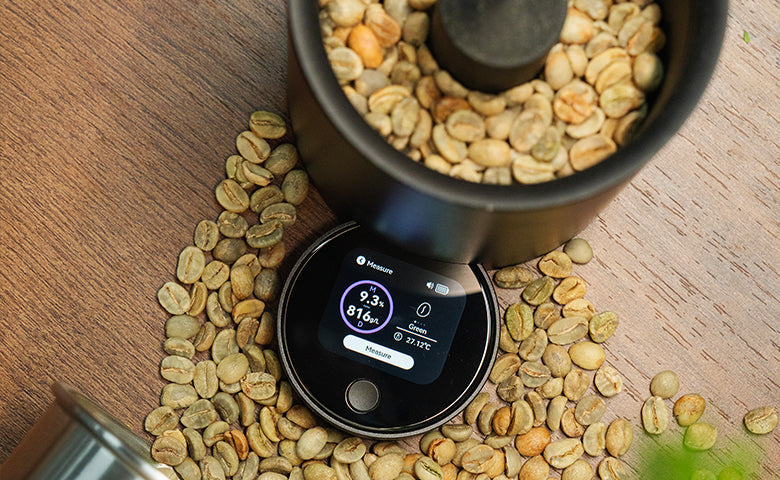How Moisture Content Affects the Storage Quality of Green Coffee Beans

The quality and flavor of coffee depend not only on its cultivation and roasting processes but also on its Storage Conditions. Moisture content is a critical factor that affects the storage quality of green coffee beans. This article explores how moisture content impacts storage quality and provides practical suggestions for managing moisture content to ensure coffee remains in optimal condition.
1.What is Moisture Content?
Moisture content in green coffee beans, ideally between 10-12%, is vital for their quality and shelf life. Exceeding this range increases risks of mold, microbial contamination, and structural degradation, leading to spoilage and off-flavors. Conversely, too low moisture content causes beans to dry out, become brittle, and lose essential flavor compounds, affecting both roasting performance and the final coffee taste. Maintaining the 10-12% moisture range ensures the beans remain stable, flavorful, and ready for optimal roasting, preserving the overall quality of the coffee.

2.Impact of Moisture Content on Green Coffee Beans
Mold and Insect Infestation: High moisture content makes green coffee beans more susceptible to mold and insect infestation, which can destroy flavor and reduce market value due to harmful mycotoxins.
Flavor and Quality: Excessive moisture accelerates internal chemical reactions, breaking down flavor compounds and causing uneven roasting, which affects the final coffee flavor.
Storage Stability: High moisture content leads to moisture migration during storage, causing uneven moisture distribution within the beans. This impacts their physical structure and reduces storage stability.
3.Factors Affecting Moisture Content
Environmental factors such as humidity, packaging, and temperature are vital in preserving the quality of green coffee beans. High humidity can cause the beans to absorb excess moisture, increasing their moisture content and affecting their stability. Maintaining appropriate humidity levels is essential to prevent this.
Additionally, the choice of packaging plays a significant role in moisture control; vacuum sealing or using desiccants can effectively shield the beans from external moisture. Furthermore, keeping a stable storage temperature is crucial, as fluctuations can lead to moisture migration within the beans, compromising their overall quality and shelf life.

4.Preventive Measures for Managing Moisture Content
- Environmental factors like humidity, packaging, and temperature are crucial for maintaining the quality of green coffee beans. High humidity can cause beans to absorb excess moisture, leading to increased moisture content that compromises their stability. To prevent this, it is essential to maintain proper humidity levels in the storage environment. Effective packaging also plays a significant role in moisture control. Using vacuum-sealed bags or incorporating desiccants can create a barrier that protects the beans from external moisture, ensuring they remain within the ideal moisture content range.
- In addition to humidity and packaging, storage temperature is a critical factor. Fluctuations in temperature can accelerate moisture migration within the beans, affecting their internal structure and overall quality. A stable storage temperature helps to prevent these negative effects, preserving the beans' integrity and extending their shelf life. By carefully managing these environmental factors, coffee producers can maintain the freshness, flavor, and market value of their green coffee beans.
5. Measuring Moisture Content in Green Coffee Beans
Accurately measuring the moisture content of green coffee beans is essential for maintaining their quality during storage. Devices like moisture meters or advanced analyzers, such as LeBrew’s RoastSee AquaDense, provide precise readings, ensuring beans stay within the ideal 10-12% moisture range. This helps prevent mold growth, flavor degradation, and structural damage, preserving the beans' overall quality and extending their shelf life.
6.Conclusion
Understanding and controlling moisture content is essential for preserving the storage quality of green coffee beans. By managing the storage environment, using proper packaging, and conducting regular moisture content testing, coffee producers and retailers can maintain the long-term quality and safety of their products. This approach not only protects consumer health but also preserves the intrinsic flavors and overall quality of the coffee, ensuring customer satisfaction and maintaining the product's reputation.



